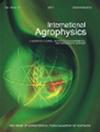生物炭对玉米/大豆和玉米/花生间作系统土壤水分、温度、养分和产量的影响
IF 1.7
4区 农林科学
Q2 AGRONOMY
引用次数: 2
摘要
间作是一种重要的农业种植技术,通过不同作物物种之间的相互作用提高资源利用效率(Chen et al.,2010)。实施合理的间作策略可以提高植物利用光、温度、肥料、水和其他自然资源的效率,还可以降低病虫害和杂草竞争的风险,提高单位面积产量(Oswald等人,2002;Hussain等人,2020)。我国间作条件下的年播种面积超过2.8×10公顷,其中豆类间作面积超过1×10公顷(Miao et al.,2011)。因此,不断改进生产间作种植模式对保障粮食安全具有重要意义。由于豆科植物可以通过生物固氮从大气中获得氮,因此禾本科和豆科物种的间作可以提高产量,这一点已被先前的研究所证实(Green et al.,2019)。当与草间作时,豆类可以作为草类作物的营养供体,从而提高氮利用率(Pirhofer等人,2012)。此外,禾本科物种和豆类的间作可以优化地上和地下部分的时间和空间生长模式,这不仅有可能促进光和©2021波兰科学院农业物理研究所等资源的有效利用本文章由计算机程序翻译,如有差异,请以英文原文为准。
Effects of biochar on soil water and temperature, nutrients, and yield of maize/soybean and maize/peanut intercropping systems
Intercropping is an important agricultural planting technique that improves resource utilization efficiency through interactions between different crop species (Chen et al., 2010). The implementation of a reasonable intercropping strategy could improve the efficiency with which plants utilize light, temperature, fertilizer, water and other natural resources, it could also reduce the risk of pests, diseases, and weed competition and increase the yield per unit area (Oswald et al., 2002; Hussain et al., 2020). The annual area in China sown under intercropping conditions is more than 2.8×10 ha, among which the area of legume intercropping exceeds 1×10 ha (Miao et al., 2011). Therefore, continuous improvement in the production of the intercropping planting model is important to ensure food security. Because legumes can obtain nitrogen from the atmosphere through biological nitrogen fixation, the intercropping of Gramineae and Leguminosae species can enhance yields, this has been confirmed by previous studies (Green et al., 2019). When intercropped with grasses, legumes can act as nutrient donors for grass crops, thereby increasing the nitrogen utilization rate (Pirhofer et al., 2012). In addition, the intercropping of Gramineae species and legumes allows for the optimization of the temporal and spatial growth patterns of the above ground and underground parts, which has the potential not only to promote the efficient use of resources such as light and © 2021 Institute of Agrophysics, Polish Academy of Sciences
求助全文
通过发布文献求助,成功后即可免费获取论文全文。
去求助
来源期刊

International Agrophysics
农林科学-农艺学
CiteScore
3.60
自引率
9.10%
发文量
27
审稿时长
3 months
期刊介绍:
The journal is focused on the soil-plant-atmosphere system. The journal publishes original research and review papers on any subject regarding soil, plant and atmosphere and the interface in between. Manuscripts on postharvest processing and quality of crops are also welcomed.
Particularly the journal is focused on the following areas:
implications of agricultural land use, soil management and climate change on production of biomass and renewable energy, soil structure, cycling of carbon, water, heat and nutrients, biota, greenhouse gases and environment,
soil-plant-atmosphere continuum and ways of its regulation to increase efficiency of water, energy and chemicals in agriculture,
postharvest management and processing of agricultural and horticultural products in relation to food quality and safety,
mathematical modeling of physical processes affecting environment quality, plant production and postharvest processing,
advances in sensors and communication devices to measure and collect information about physical conditions in agricultural and natural environments.
Papers accepted in the International Agrophysics should reveal substantial novelty and include thoughtful physical, biological and chemical interpretation and accurate description of the methods used.
All manuscripts are initially checked on topic suitability and linguistic quality.
 求助内容:
求助内容: 应助结果提醒方式:
应助结果提醒方式:


